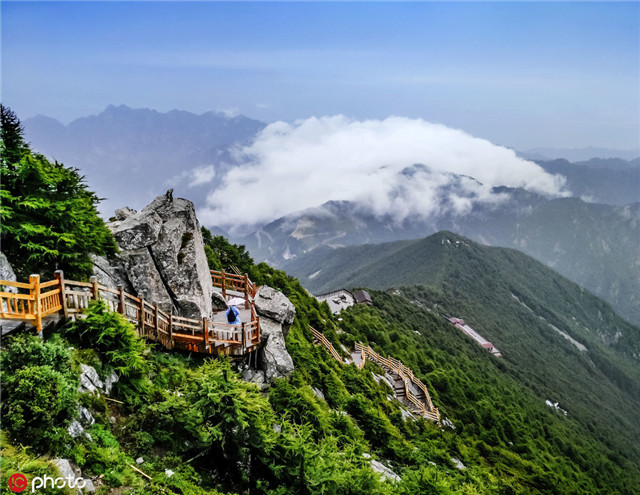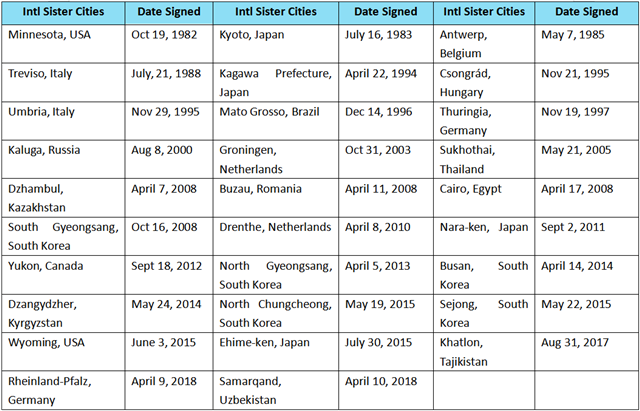Birthplace of Chinese civilization and Huaxia culture


Population: 39,528,999 (2020)
Area: 205,600 square kilometers
Location: Northwest China
Located in the hinterland of the Chinese mainland and the middle reaches of the Yellow River, Shaanxi province is adjacent to Shanxi and Henan provinces to the east, and Ningxia Hui autonomous region and Gansu province to the west. To the south are Sichuan and Hubei provinces and Chongqing municipality, and to the north, neighboring Inner Mongolia autonomous region.
Xi'an, which includes the sites of the former Chinese capitals of Fenghao and Chang'an, is the provincial capital. Xianyang, which served as the capital of the Qin Dynasty (221-206 BC), is located nearby. The other prefecture-level cities that make up the province are Ankang, Baoji, Hanzhong, Shangluo, Tongchuan, Weinan, Yan'an and Yulin.
Shaanxi comprises the Wei Valley and much of the surrounding fertile Loess Plateau, stretching from the Qinling Mountains and Southern Shaanxi in the south to the Ordos Desert in the north. Along with areas in Shanxi and Henan provinces, Shaanxi was the cradle of Chinese civilization, with its Guanzhong region sheltering the capitals of the Zhou (c.11th century-256 BC), Qin (221-206 BC), Han (206 BC-AD 220), Sui (581-618), Tang (618-907) and Jin (1115-1234) dynasties.
Climate:
Due to its large span in latitude, Shaanxi has a variety of climates. The province's annual average temperature is roughly between 8 to 16 C. Its northern area, including the Loess Plateau, has cold and very dry winters, dry springs and autumns, and hot summers. The area known as Guanzhong is mostly semi-arid, though there are a few areas with a humid subtropical climate, with cool to cold winters, and hot, humid summers that often see early season heat waves. The southern area lies in the humid subtropical zone, with more temperate winters and long, hot, humid summers.
Resources:
Rich in mineral resources, Shaanxi has discovered 138 mineral species. Of the 93 types of minerals with proven reserves, Shaanxi boasts reserves of 57 types that rank in the top 10 in China. There are 46 cities and counties in the province, almost all of which are concentrated in the northern Shaanxi and Weibei plateau region.
History:
Shanxi province, believed to be one of the key birthplaces of Chinese civilization and Huaxia culture, has a history of more than 1,000 years of providing capital cities. The current capital city, Xi'an, the starting point of the ancient Silk Road, boasts the world's richest cultural heritage and the most complete preservation of an ancient city.
Economy:
With the support of the national government, Shaanxi province has been actively involved in the Belt and Road Initiative (BRI), and is expanding its opening-up policies to develop a new pattern of all-around, multilevel, and wide-ranging opening-up.
In 2018, the province recorded a GDP of 2.44 trillion yuan ($353.66 billion), an increase of 8.3 percent year-on-year, 1.7 percentage points higher than that of the whole country, with its growth rate ranking fifth in China, and revealing the province's best socio-economic development since 2015.
Shaanxi province continually optimizes its economic structure, and the three main industries experienced coordinated development in 2018. Its agriculture sector continued to expand, with the total grain output in 2018 reaching 12.26 billion kilograms. The added value of industries above a designated scale recorded an increase of 9.2 percent, and the added value of the service sector was up 8.8 percent.
The six new pillar industries – modern chemical industry, automobile, aerospace and high-end equipment manufacturing, information technology, new materials, and modern medicine – are also undergoing rapid growth. It is expected that by 2021, the total industrial output value of the six industries will hit 1.8 trillion yuan, accounting for more than 46 percent of the province’s industrial proportion, 17.9 percentage points higher than that of 2015.
Tourism resources:
With more than 7,000 years of civilization, Shaanxi has abundant tourism resources. There are 49,058 cultural heritage sites at all levels, 253 museums and 1.87 million items of cultural relics in the collections of the province's cultural institutions. These sites include 72 ancient imperial tombs, Famen Temple, famous for its Buddha finger relics, and the Xi'an City Wall, the most complete preservation of an ancient city in the world.
Administrative divisions:
Shaanxi province governs 10 prefecture-level cities. They are Xi'an, Baoji, Xianyang, Tongchuan, Weinan, Yan'an, Yulin, Hanzhong, Ankang, and Shangluo.
Sister cities:

MOST POPULAR
- 1 China to continue opening up its mega-market to world: premier
- 2 Policies concerning expats, foreign enterprises in November 2025
- 3 China to enhance convenience for inbound tourism: minister
- 4 Departure tax refund applications surge 285% as inbound tourism rebounds
- 5 China's foreign trade up 3.6% in first 11 months of 2025







